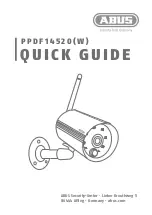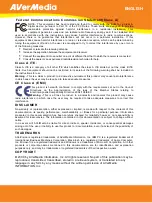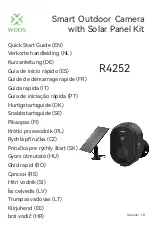
LQ-200CL
26
Principle of Pixel black level correction (DSNU / FPN correction)
Dark Signal Non-Uniformity or Fixed Pattern Noise is, as the name implies, fixed pattern
on the sensor output, which is
not
dependent on the incoming light.
To correct for DSNU/FPN, the camera’s internal correction circuit captures one or several
lines of data under dark conditions (the lens
must
be covered by a lens cap), and the
average across the line is calculated. Based on the average, coefficients are then
generated for each individual pixel. The coefficient has the function of adding or
subtracting a value to the pixel output. These coefficients are stored in a non-volatile
memory, and are therefore maintained after power down.
As the dark signal is highly dependent on the exposure time, this correction must be
performed under the operating conditions (exposure time and line rate) that will be used
by the application.
7.22.
Command PBS -
Request Status After Pixel Black Correction
This command returns the status of the pixel black correction, with the following
parameters:
0=Not completed yet
1=Succeeded
2=Error1: Image too bright
3=Error2: Image too dark
4=Error3: Timeout occurred
7.23. Command PER,PEG,PEB and PEIR – Programmable Exposure for R,G,B,and NIR
This command allows individual setting of the exposure time for each channel. It is only
valid for the Shutter-Select mode (see chapter 6.2)
Settings:
2 to 2,150,400 in 25ns steps
Associated functions:
EI =0 (R,G,B and NIR independent)
EI=1 (R , B and NIR exposure interlocked with G)
Applicable modes:
Shutter-Select (internal/external trigger)
Note:
The actual exposure time (ns) is calculated as follows:
T
exp
= 25ns x (Repetition Period (clk) – (T1 (clk) +21clk) )
Where,
Repetition Period is line rate or trigger interval
T1 is programmable exposure setting value and 21clk is a fixed value.
Average
After correction: Flat dark signal response from pixel to
pixel
Max
Before correction: dark signal non-uniformity from pixel to pixel
Subtract factor
Add factor
Min
Average















































